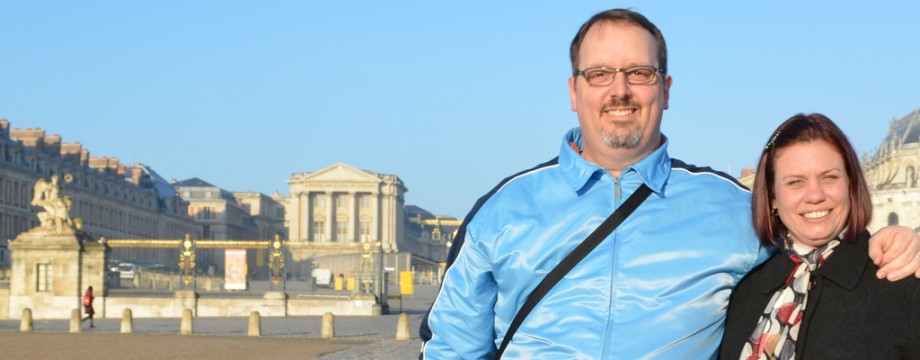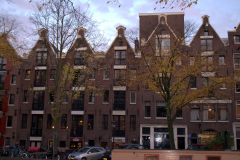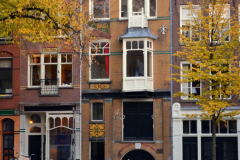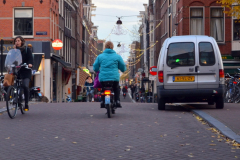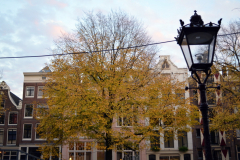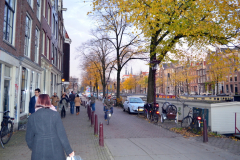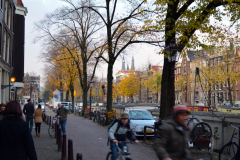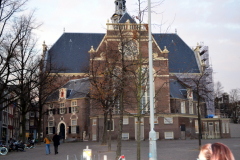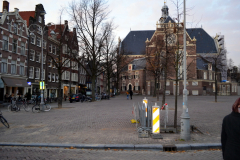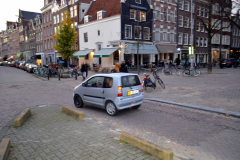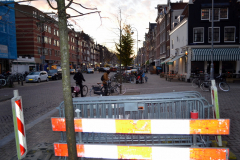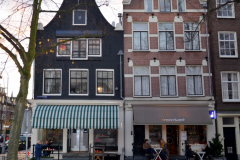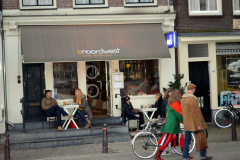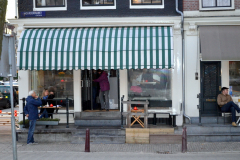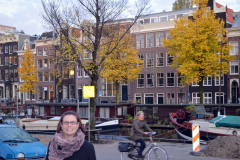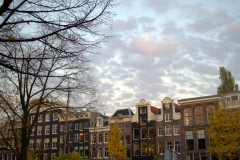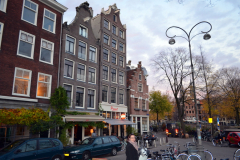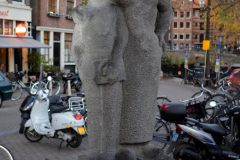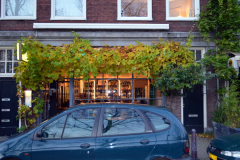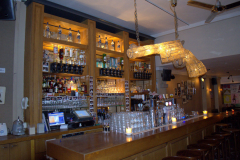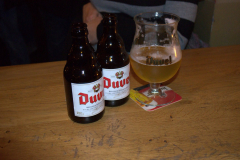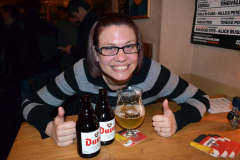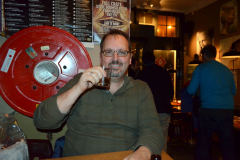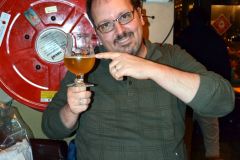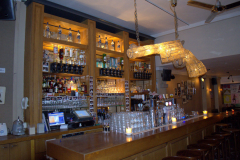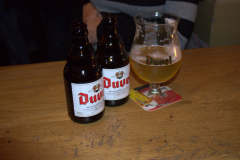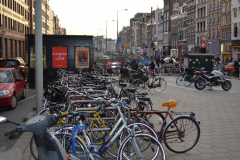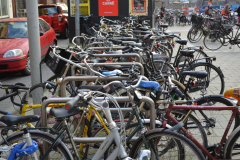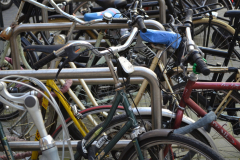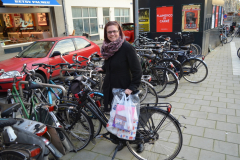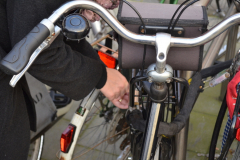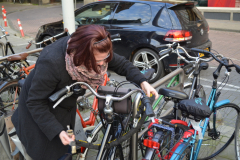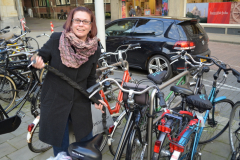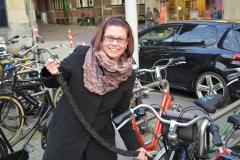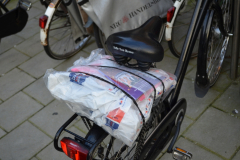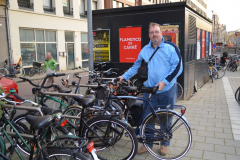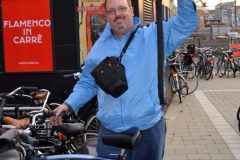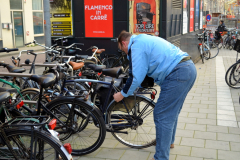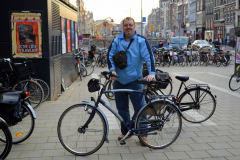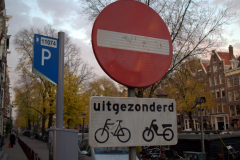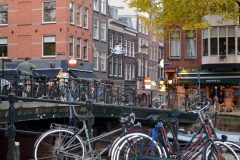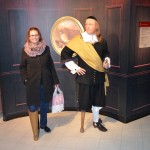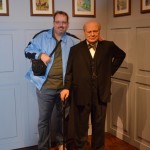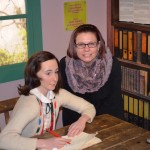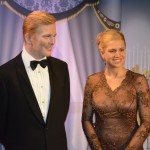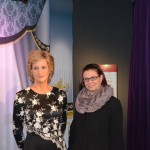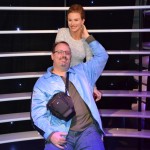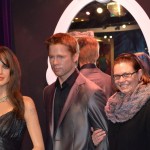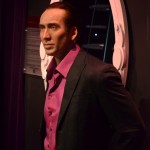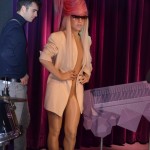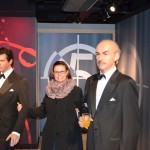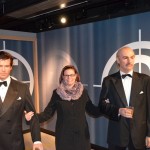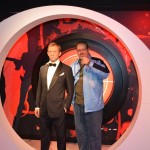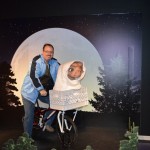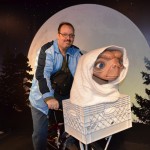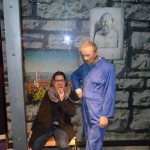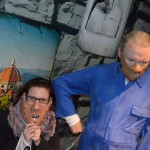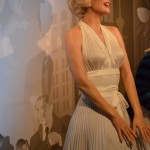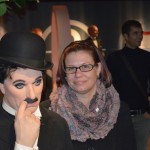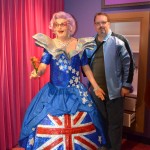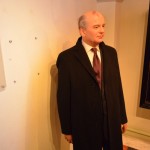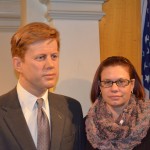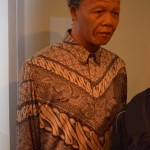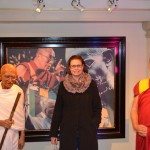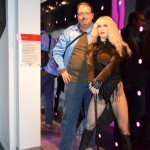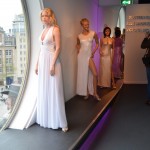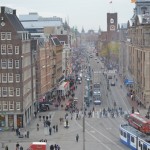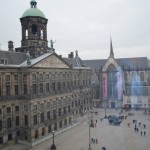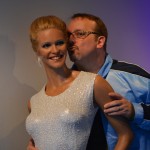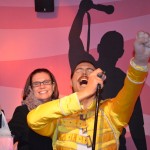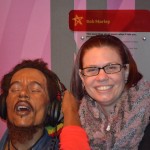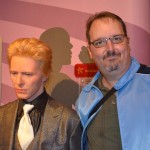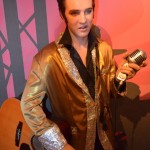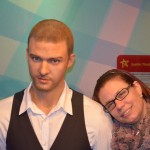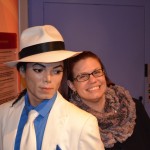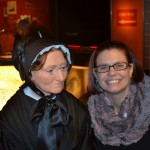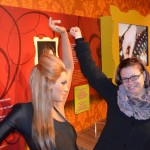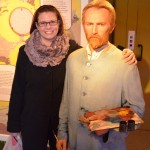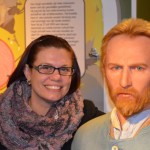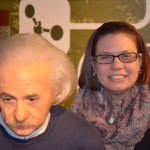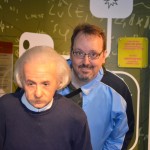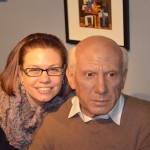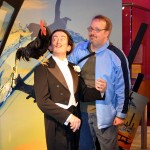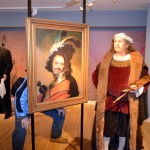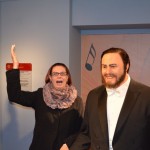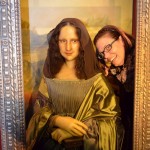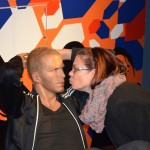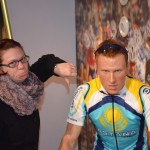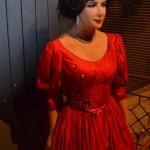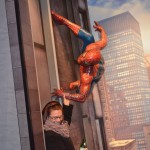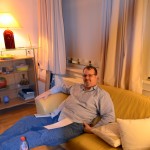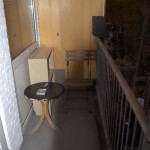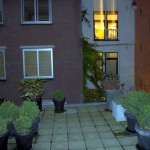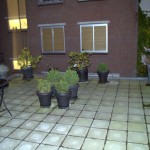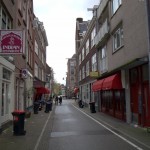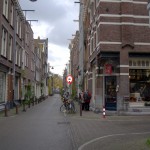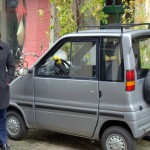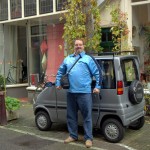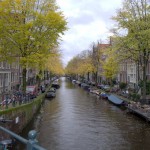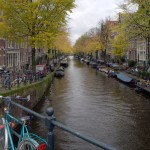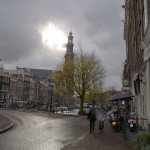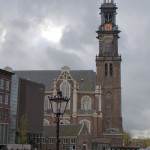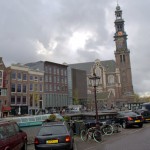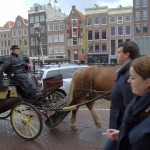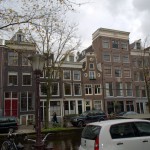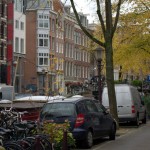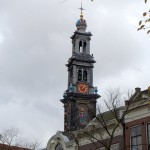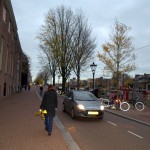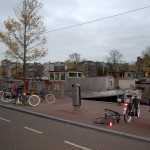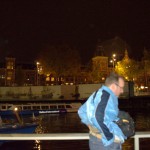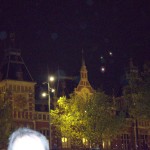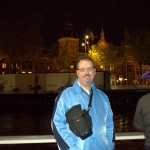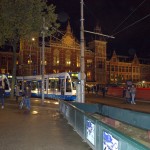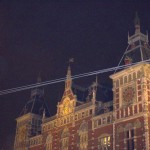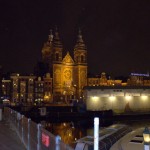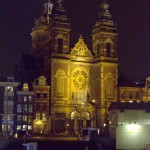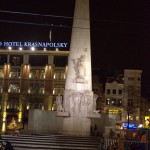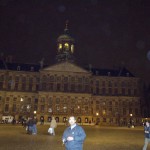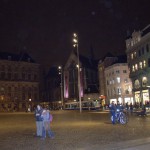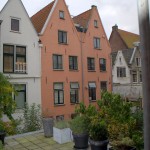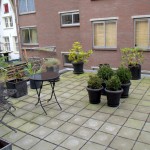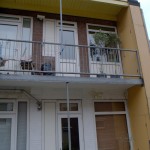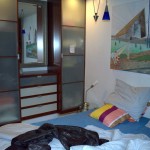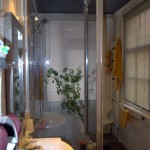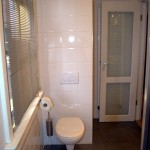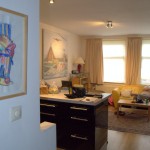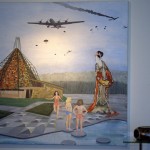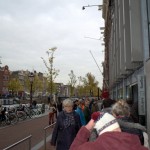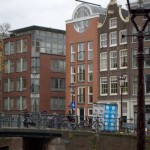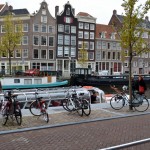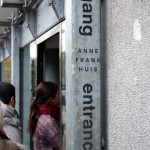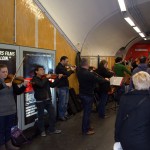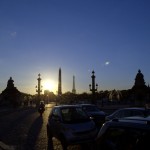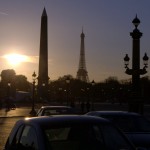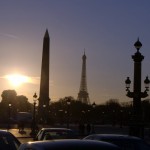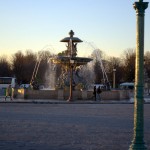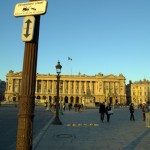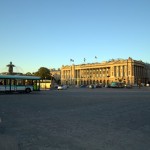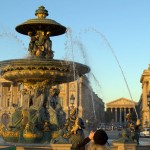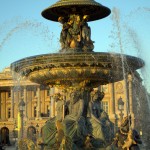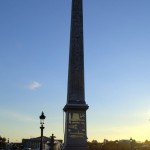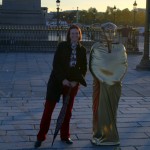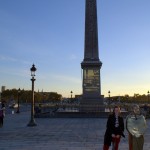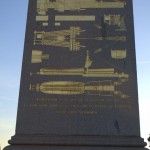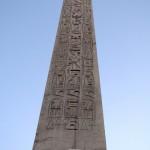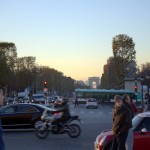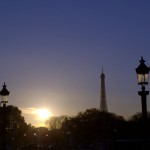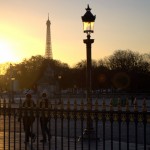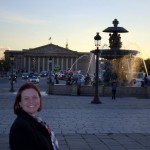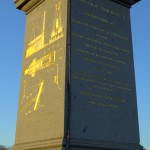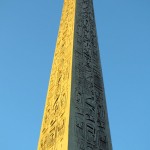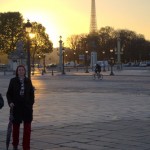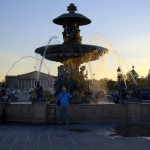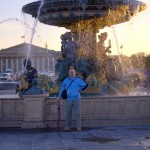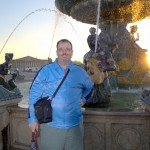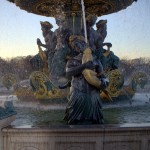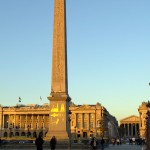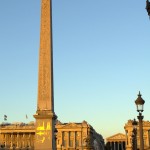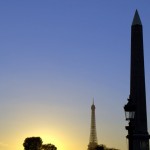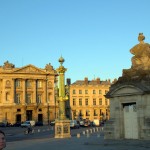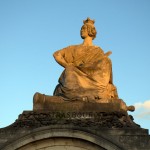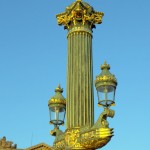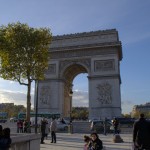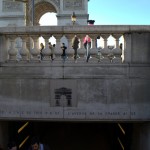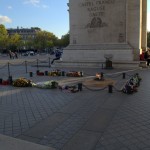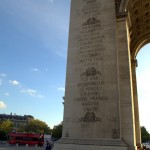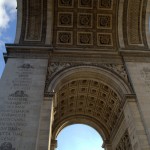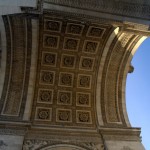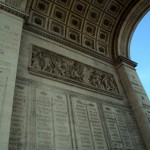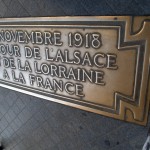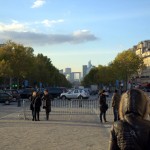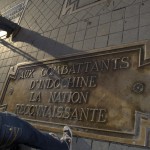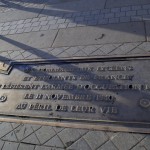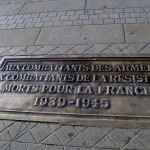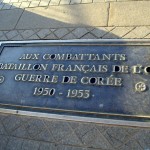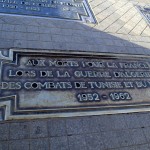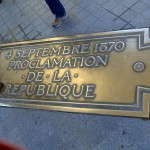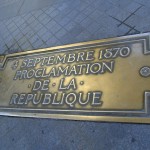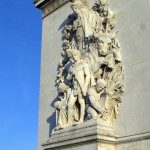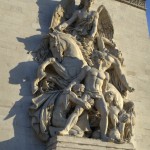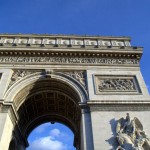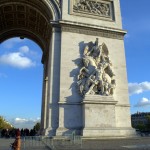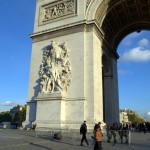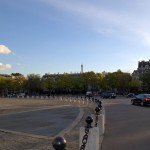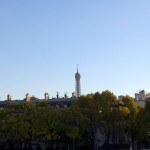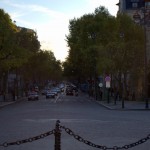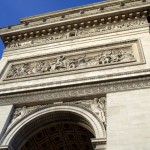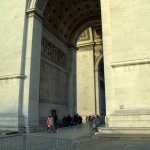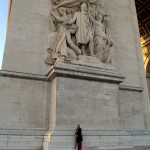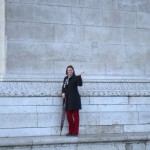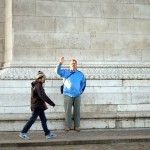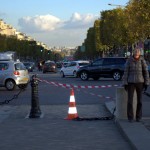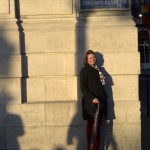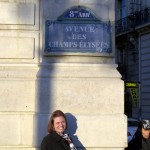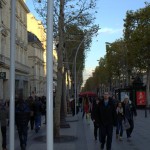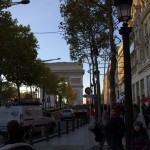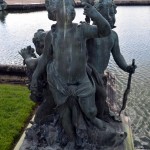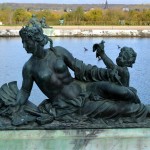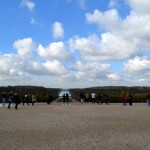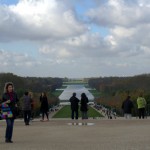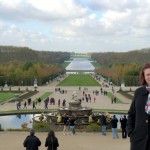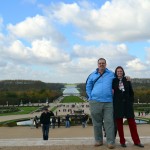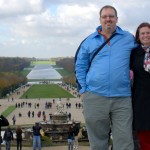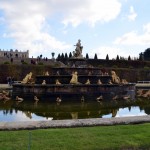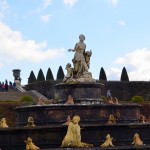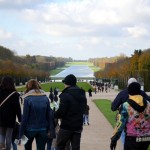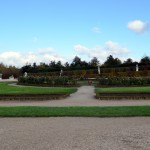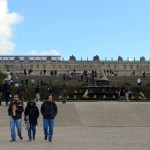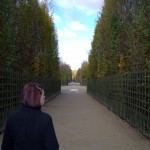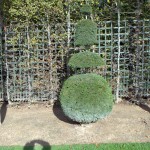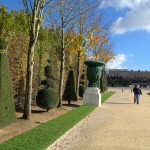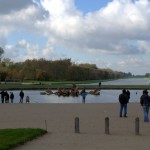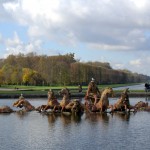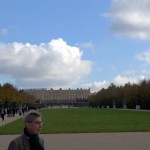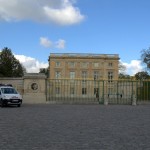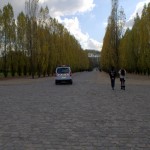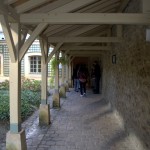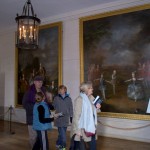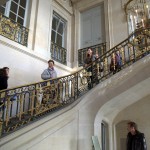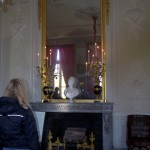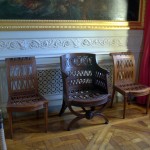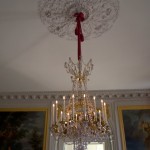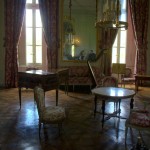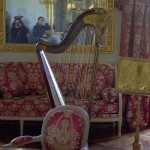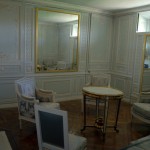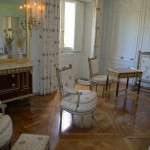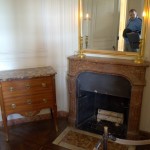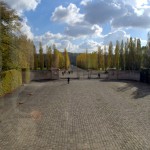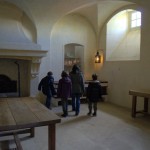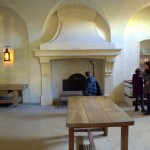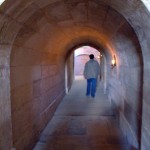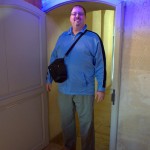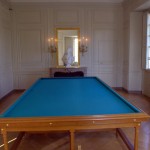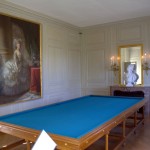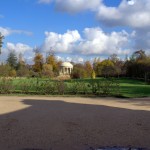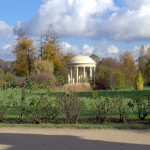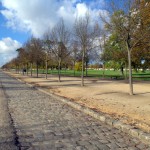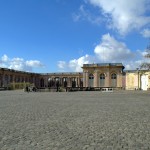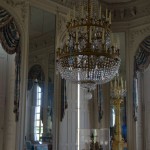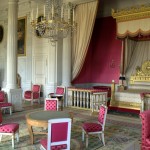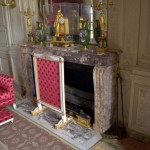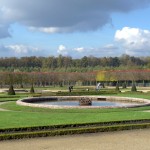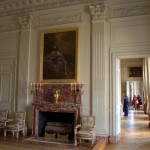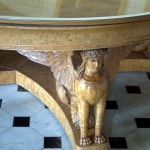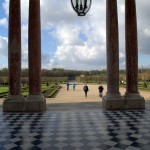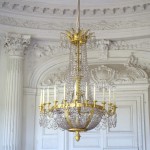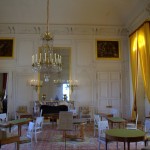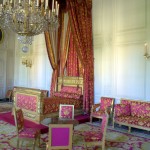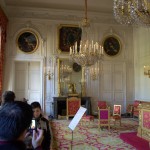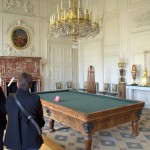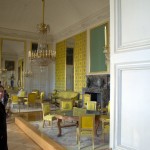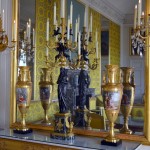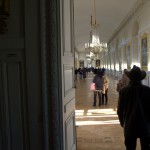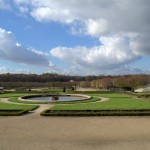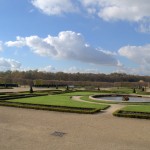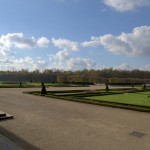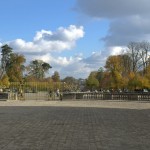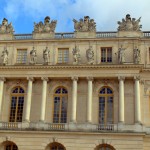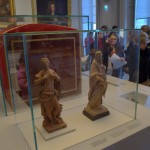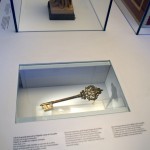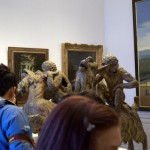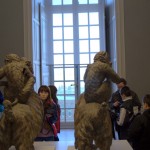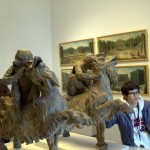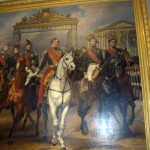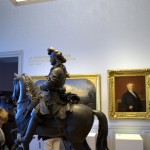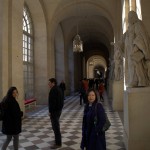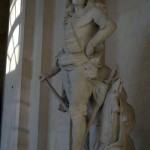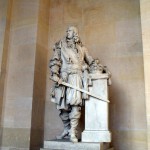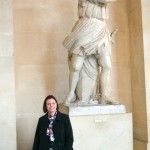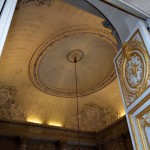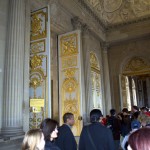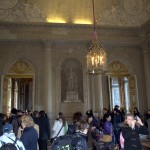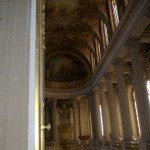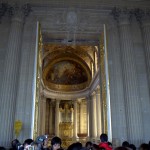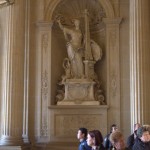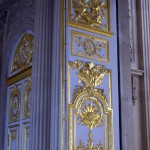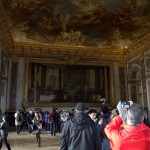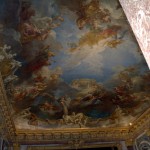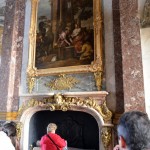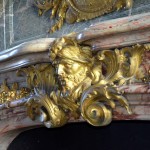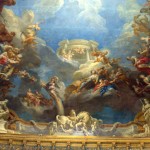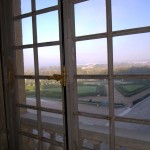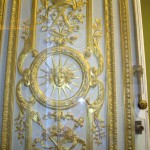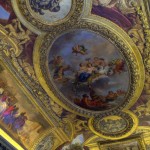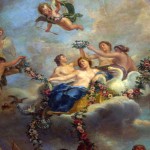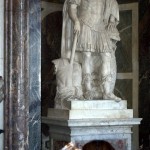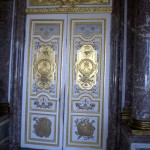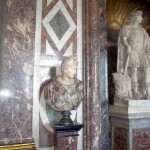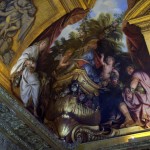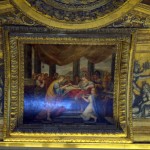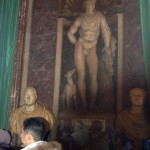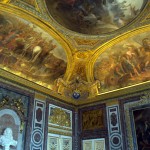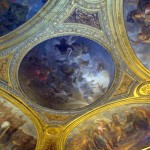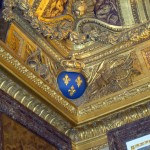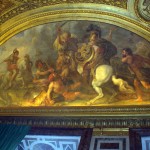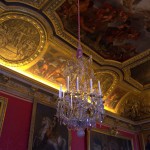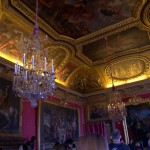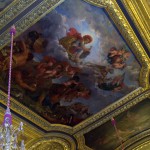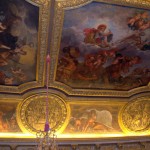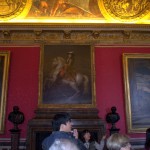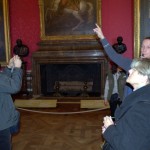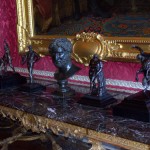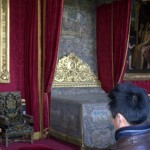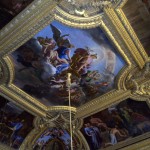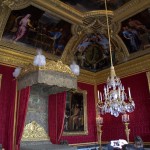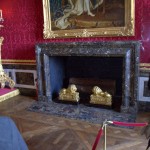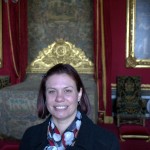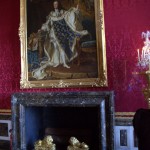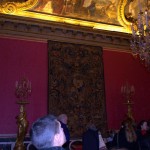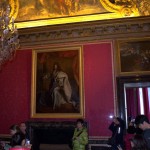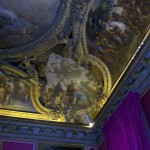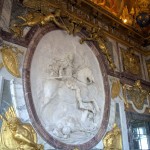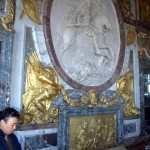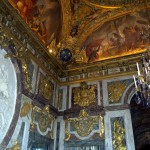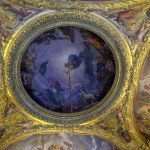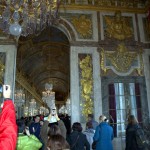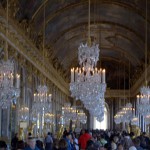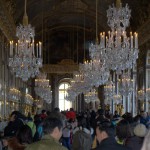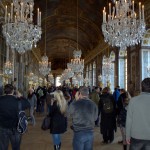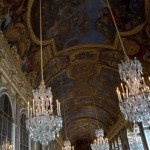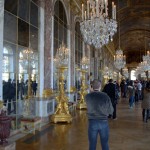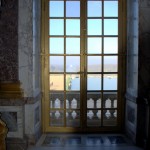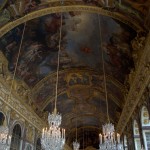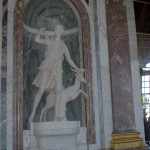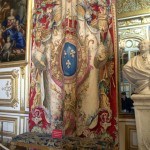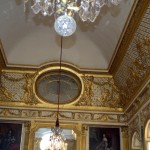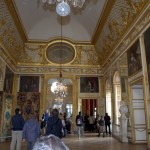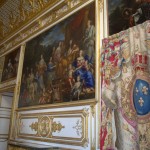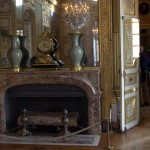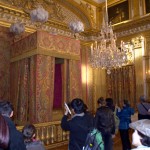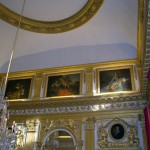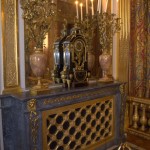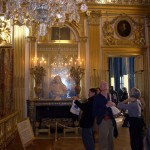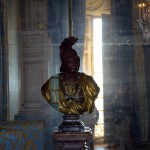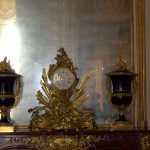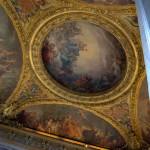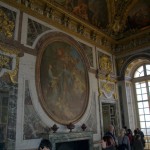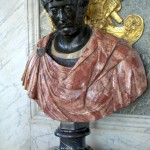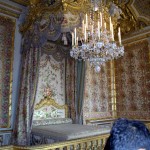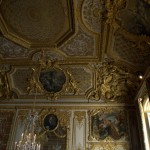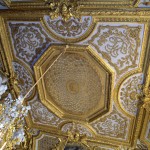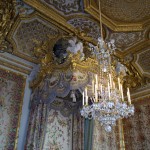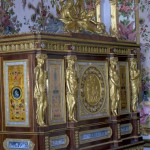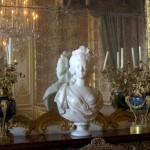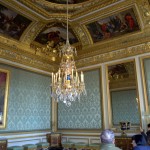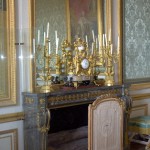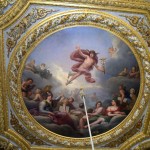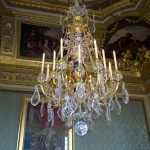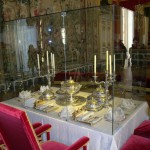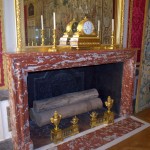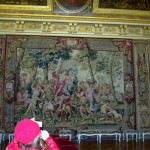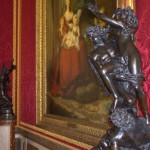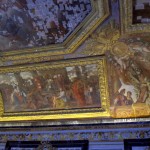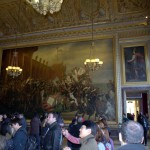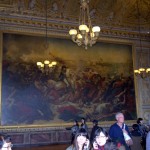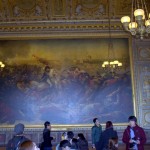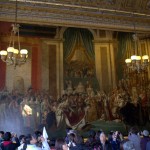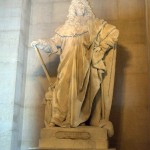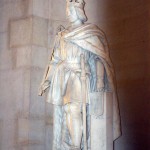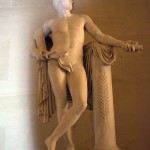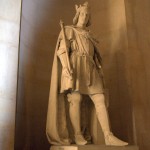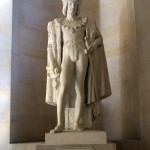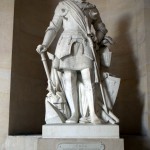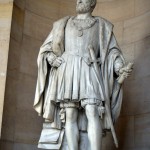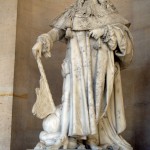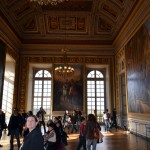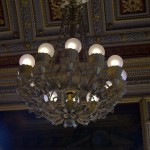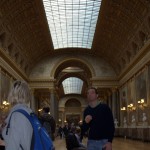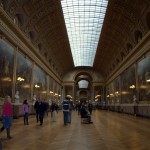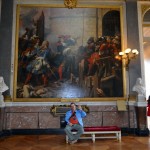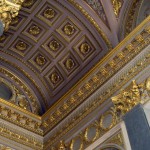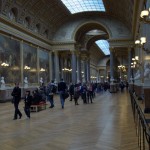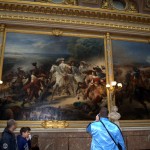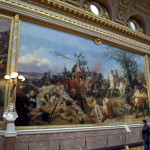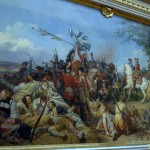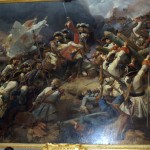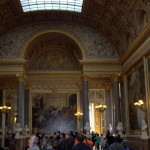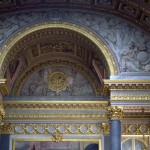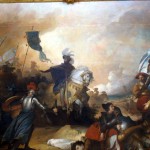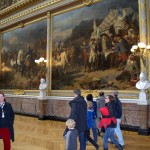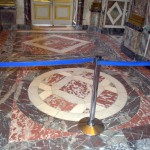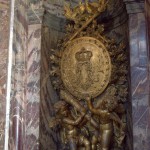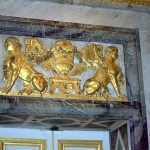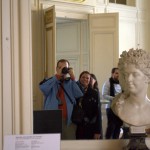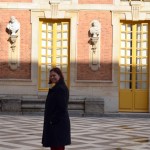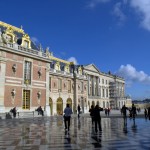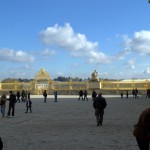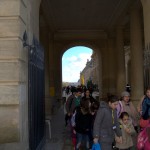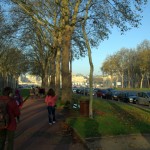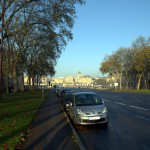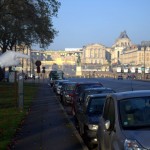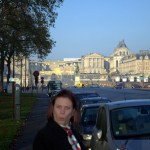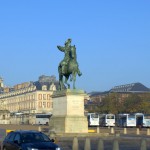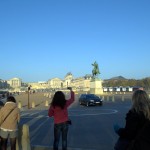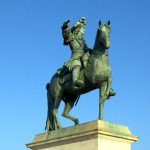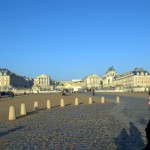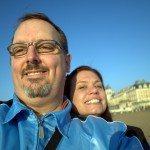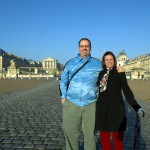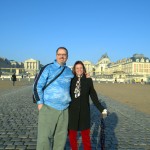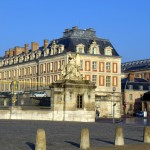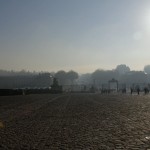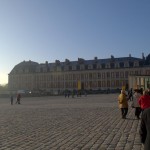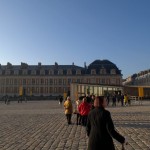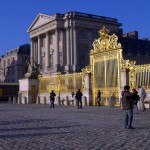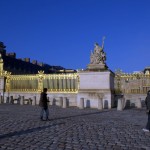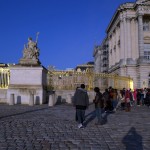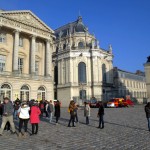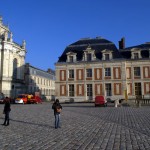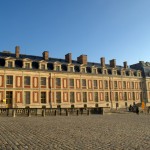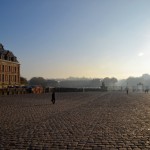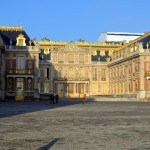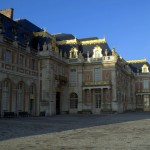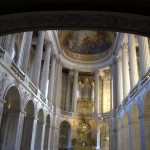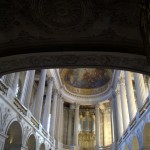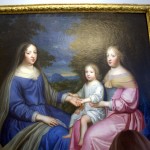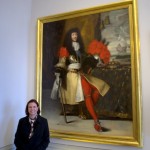Some pictures from a trip to an Alsation winery, our ship, and our cabin, in no particular order. Will clean it up when I have a chance.
Final Photos in Amsterdam
Here are the final photos of our trip to Amsterdam. Most of them show streets and businesses in the Jordaan neighborhood where we stayed. You can also see some interior shots of our favorite neighborhood pub, Proust.
click on any photo to pop-up a Lightbox that will allow you to easily scroll through all the photos in this gallery.
Related Images:
I Want to Ride My Bicycle
On the morning of our first full day we rented a pair of bikes. In case you didn’t know, this is what they do in Holland. They ride bikes. Everyone, even old people. There are so many bikes in Amsterdam that the bicycle parking garage outside the Central Station has room for 2500. But they would need space for an additional 7500 to accommodate all the bikes which are parked all over the Central Square every single day. There are so many bikes in Amsterdam that more than 55,000 are stolen every year. There’s an old saying in Amsterdam that the canals are only six meters deep—two meters of water, two meters of mud, and two meters of bicycles. There are so many bicycles in Amsterdam that on some busy streets the bikes are more dangerous than the passing cars and trucks. From what we could tell, bikes are king here, and pedestrians are expected to get out of the way. If you’re in Amsterdam, and you hear a bike bell, you’re probably about to get run over. So when you are walking, keep your head on a swivel, and listen for the bell!
Although we spent a lot of time stopping to check the map every few blocks (even the bicycle vendor admitted that everything looks the same here), we had a great time on our bikes. It made us feel very Dutch, and helped to burn off some of the calories we were eating and drinking. Each of us only crashed once. Mine was a bit more dramatic (sorry, no video). Shannon simply ran the back of her bike into one of the knee-high stanchions that keep the parked cars off of the sidewalk. Me, I was making a turn across a spot where two tram lines converge. My front wheel got stuck between the tram track and the cobblestones. When I tried to turn the wheel to make the turn, the bike simply plowed over on its side as the front wheel was stuck in the tracks. I tried to catch myself with an outstretched leg as the bike went over, but the strap of my camera bag got snagged on the handlebars, pulling me down onto the street. Several concerned locals stopped to assist and asked if I was alright. I was physically unharmed, but a little embarrassed!
Click on any thumbnail to pop-up a Lightbox which will allow you to scroll through all the photos in this gallery.
Related Images:
Madame Tussauds Wax Museum in Amsterdam
This was the silliest thing we did on our trip, and the most blatantly touristy, but it was lots of fun. See how many of the celebrities and politicians you recognize. There are also a few shots of Dam Square taken from a giant plate-glass windows you pass by in the middle of the tour.
Click on a thumbnail below to view a larger version, then use your browser’s back button to return to this page.
Related Images:
Amsterdam, a Lovely City
On Wednesday we boarded a Thalys high-speed train at Gare du Nord that was headed for Amsterdam. Tickets were sixty-dollars apiece, a real bargain when you consider the speed and comfort of the travel. The seats, even in second class are much wider and more comfortable than airplane seats. And the average speed for the trip is around 135 mph, much faster than you could ever drive it. And you cannot surf the web or play Sudoku while you drive (or at least you shouldn’t).
The one thing that really surprised us on the trip was how many electric-generating wind turbines dotted the landscape. In my opinion, this is an area, along with solar, where the US has really fallen behind. It seemed as if every farmer between Paris and Amsterdam had at least a few turbines installed on their property.
From the moment we emerged from the Central Station at Amsterdam and climbed into a taxi, we knew we would love this town. Everyone here seems really happy, and they are all extremely helpful and polite. EVERYONE, from the taxi wrangler to the busboy at the restaurant spoke English to us before we even had to ask. When I apologized to the bartender of the neighborhood pub where we stopped for a drink on our first afternoon because I didn’t know any Dutch phrases, he said, ” It’s not a big deal; everybody speaks English, here!” Even the older people can speak and understand several basic phrases—they even seem to enjoy practicing their English. It’s a like a badge of honor.
Aside from the incredible hospitality and friendliness, the place is beautiful. Okay, so it doesn’t rival Paris for the sheer number of monuments, museums, and spectacles, but the canals and old houses are so charming and beautifully maintained it’s almost like stepping back in time. And the entire city is spotlessly clean. There are trash and recycling receptacles on almost every corner, and Amsterdammers seem to take pride in keeping the city clean.
The neighborhood where we stayed is called the Jordaan (pronounced “Your-dahn”), and is often called the “Greenwich Village” of Amsterdam. It’s a non-touristy residential area filled with restaurants, pubs and shops that the locals frequent.
Here are some photos of the apartment where we stayed, including a cute little terrace off the bedroom in the back of the house, along with some random street-shots. We visited the Hermitage museum and the Anne Frank House while we were there, but neither allows pictures.
Click on a thumbnail below to view a larger version, then use your browser’s back button to return to this page.
Related Images:
String Ensemble (Vivaldi?) dans le Metro
We spent a fair amount of time in the Paris Metro. It’s the easiest way to get around the city. Every day we would stumble across a lone guitarist playing for spare change, or more annoyingly, an obnoxious accordion player who boarded a train and serenaded the weary travelers into submission.
One afternoon as we were travelling back to our apartment, I could have swore I heard classical music echoing from the tunnel ahead of us. Sure enough, as we progressed the sound became more distinct until we happened upon a larger intersection of train tunnels where an entire string ensemble was performing a classical masterpiece. They were really good. It sounded like Vivaldi, but I’m no expert. I shot some video. Does anyone recognize this song?
Here’s a still photo for those of you having trouble watching the movie.
Related Images:
Place de la Concorde
Directly in line with the Arc de Triomphe, and situated at the eastern end of the Blvd Champs Elysee lies the Place de la Concorde. Designed in 1755 to honor the sitting monarch, this plaza was originally called the Place Louis XV, and included a statue of the king on horseback. During the French Revolution, a guillotine was erected here. Many notable executions took place, including those of King Louis XVI, Queen Marie Antoinette, and Robespierre. In the summer of 1794 more than 1300 persons were beheaded here.
In 1836 the current centerpiece of the plaza arrived—an Egyptian obelisk that once marked the entrance to the Luxor temple was given to France by the viceroy of the Ottoman empire at the time. Two fountains and various decorative light-posts complete the decorations adorning the plaza.
Click on any thumbnail to see the full-size picture, then use your browser’s Back button to return to this page.
Related Images:
Arc de Triomphe and Avenue des Champs Elysee
Commissioned by Napoleon in 1806 to celebrate his victory at the Battle of Austerlitz, the Arch took thirty years to complete. It includes dozens of friezes, reliefs and plaques commemorating the French soldiers who have died in battle. In 1919 a biplane was flown through the arch during a celebration of the end of WWI.
Click on any thumbnail to see the full-size picture, then use your browser’s Back button to return to this page.
Related Images:
Verailles Gardens, Petit Trianon, and Grand Trianon
In addition to the main chateau there are also two smaller chateaus (Petit Trianion and Grand Trianon) and an English-style Hamlet (Hameau)nestled among the parks and gardens of Versailles. There are also acres of canals, and dozens of fountains. We never made it out to the hamlet, where Marie Antoinette is said to have made her famous “Let them eat cake” speech, but we did tour the Trianons with the help of a golf cart rental they offer for fat Americans who are tired of walking everywhere. Seriously, I never would have made it on foot.
We had gotten about halfway to the Grand Trianon, past the fountain of Apollo, and were debating turning back for the main chateau (god I really need to get in shape!). Suddenly, a golf cart tore past us. “That’s what we need. I wonder how they got that,” I said to Shannon. Then we saw the sign advertising “Electric Car Rental.” Damn thing was practically dead when we took possession, and only ran about 4 MPH, but it beat the hell out of walking the rest of the way to the Trianons and back! Returning the vehicle, we rolled to a stop with the low-battery warning light ablaze. We weren’t really weren’t sure we would make it back to the stand. Best thirty Euros we spent on the entire trip.
The Grand Trianon was built by Lous the XIV in 1687 as a place to escape the formality of the main chateau. It was also occupied by Napoleon during his time, and in 1963 was converted briefly into a guesthouse for French Presidents by Charles de Gaulle.
The Petit Trianon was originally built by Louis XV as a love shack for his mistresses. In 1774, the 20-year-old Louis XVI gave the chateau and its surrounding park to his 19-year-old Queen Marie Antoinette for her exclusive use and enjoyment. She had the Hameau built a few years later, complete with gardens in the English-style.
The pictures from the two lesser chateaux and the gardens are mixed together below. Perhaps someday I will get around to sorting and labelling them. But not today.
Click on any thumbnail to see the full-size picture, then use your browser’s Back button to return to this page.
Related Images:
Versailles
Undoubtedly the most exciting day of our entire trip. Even though I had visited before, I was easily overcome by the grandeur and elegance of the place. And yet, I felt the frivolous excess, too. Estimates put the cost of maintaining Versialles during the 1700’s at between 6-25% of the entire governmerntal budget. It was easy for me to imagine the throngs of peasants who crashed the gates of Versailles in October 1789 demanding their monarch and the rest of the French government return to Paris to address the problems facing the city and indeed much on the nation. While the king and his cohorts were frollicking in splendor, much of the city starved. From Wikipedia:
The Women’s March on Versailles, also known as The October March, The October Days, or simply The March on Versailles, was one of the earliest and most significant events of the French Revolution. The march began among women in the marketplaces of Paris who, on the morning of 5 October 1789, were near rioting over the high price and scarcity of bread. Their demonstrations quickly became intertwined with the activities of revolutionaries who were seeking liberal political reforms and a constitutional monarchy for France. The market women and their various allies grew into a mob of thousands and, encouraged by revolutionary agitators, they ransacked the city armory for weapons and marched to the Palace of Versailles. The crowd besieged the palace and in a dramatic and violent confrontation they successfully pressed their demands upon King Louis XVI. The next day, the crowd compelled the king, his family, and most of the French Assembly to return with them to Paris.
These events effectively ended the independent authority of the king. The march symbolized a new balance of power that displaced the ancient privileged orders of the French nobility and favored the nation’s common people, collectively termed the Third Estate. Bringing together people representing disparate sources of the Revolution in their largest numbers yet, the march on Versailles proved to be a defining moment of that Revolution.
Click on any thumbnail to see the full-size picture, then use your browser’s Back button to return to this page.

